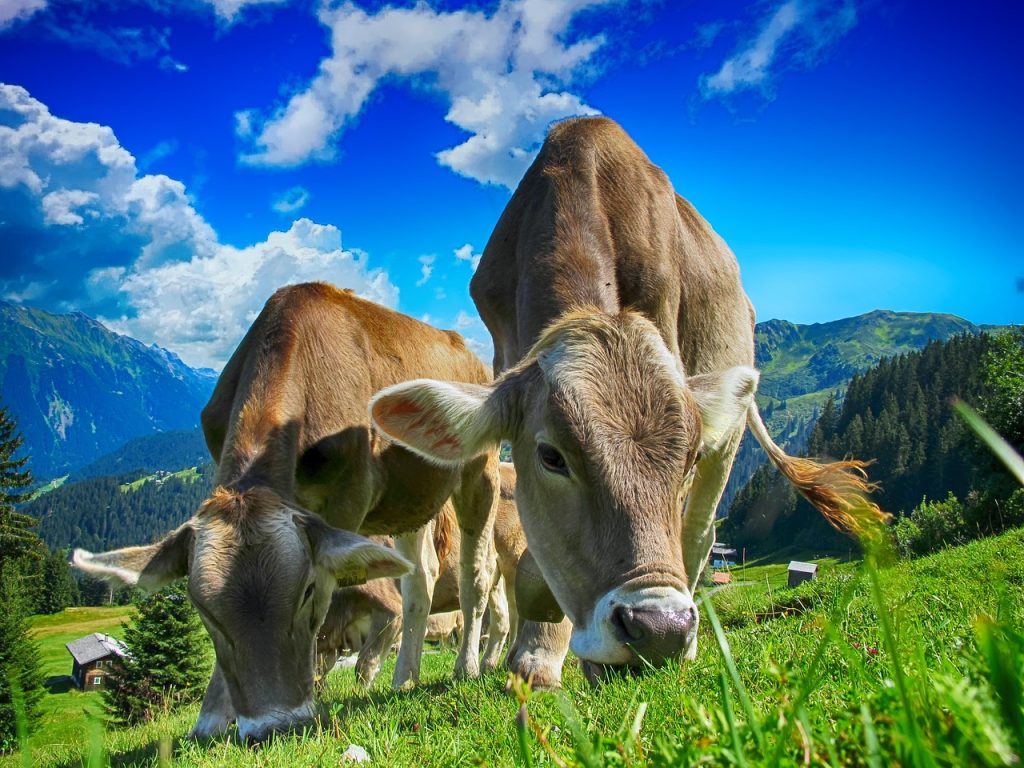All fields are required
Posted in Our Blog,Outbreaks & Recalls,Raw Milk on April 8, 2024

Recent reports of bird flu detected in dairy cows in four states so far may explain some herd production losses. But what does this mean for the milk supply? Is it safe?
Here’s what we know so far.
The Idaho State Department of Agriculture announced that Idaho now joins Kansas, New Mexico, and Texas in detecting highly pathogenic avian influenza in dairy cows. Data suggests that the virus may be spreading cow-to-cow.
Evidence suggests that this highly pathogenic strain of avian influenza may be spreading from cow-to-cow.
A “mysterious illness” in dairy cows across the four states has finally been linked to bird flu, after samples from cows in Kansas and Texas revealed the H5N1 subtype of highly pathogenic avian flu.
Prior to this testing, it is unclear whether the virus has already been infecting cows but was undetected.
According to state officials, the Idahoan facility had recently imported cattle from another state that has since identified bird flu in cattle.
The Idaho State Department of Agriculture urges dairy producers to monitor their herds. If cattle show symptoms, they should reach out to their local veterinarian immediately. In addition to a drop in milk production, other symptoms are associated with the illness in cows.
These include:
Reduced production and quarantine activities significantly impact dairy farmers.
In response to bird flu detections in several states, many states are taking a proactive approach to help reduce potential spread within their borders.
The New Mexico Livestock Board has either restricted or banned import of cattle from the states of Delaware, Idaho, Kentucky, Nebraska, North Carolina, and Utah.
The state of Delaware is requiring veterinarians first reach out to the agriculture department prior to shipping cattle from New Mexico to determine if they are coming from affected counties. These imported cattle must be placed in a 30-day quarantine after entering the state.
Idaho has made a strict ruling. No cattle not already destined for an approved slaughterhouse may be imported from any location in New Mexico.
The New York State Department of Agriculture and Markets indicates that this highly pathogenic bird flu has not yet been detected in dairy cows or goats in their state. They did, however, issue an alert for veterinarians to contact state officials if any signs of this illness are noted in farm animals.
One person has been diagnosed from exposure to sick cows so far. This is the first case of bovine/cow-acquired illness in humans. This is not the first time, however, that a human has become sick with bird flu. A person involved in the poultry industry who was exposed to infected poultry has also become sick with bird flu.
In this case, symptoms were mild. In fact, conjunctivitis (or red eye) was the only symptom.
Human symptoms include conjunctivitis (red eye)
The patient is recovering well. They are receiving antiviral treatment and being isolated as they recover.
The CDC has issued new guidance for those exposed to bird flu in infected birds or other animals that include self-monitoring for respiratory symptoms and conjunctivitis for 10 days following initial exposure. The CDC also suggests this monitoring is recommended even in those wearing recommended personal protective equipment.
The agency is also recommending healthcare providers to obtain nasopharyngeal swab samples in addition to conjunctival samples for patients seeking care for conjunctivitis symptoms.
If people can become sick from exposure to sick cows, is milk or meat safe to consume?
So far the United States Department of Agriculture (USDA), U.S. Food and Drug Administration (FDA), and the Centers for Disease Control and Prevention (CDC) say that the risk to the public is still considered low. The consensus is that there is no concern about the safety of our country’s commercial milk supply. This situation should not pose a risk to consumer health.
Collectively, the stance is that pasteurization is proven to inactivate bacteria and viruses, like influenza, in milk. This should be the case, should this particularly harmful strain be present in milk.
Pasteurization is proven to inactivate bacteria and viruses, like influenza.
Additionally, dairies should only be sending milk from healthy animals for human consumption. These safeguards help to prevent animals impacted by the virus from contributing milk into the food supply.
But what about meat?
According to current sources, the consensus is that these bovine products are safe. However, strong emphasis is placed on making sure that dairy products are pasteurized, and meat are properly cooked to an appropriate internal temperature are safe for consumption.
Influenza is not the only threat to safety when it comes to beef. Cross contamination can cause any number of illnesses if beef is consumed without proper heat treatment to inactivate and kill viruses and bacteria. However, certain bad bugs are generally associated with undercooked beef.
Appropriate cooking temperatures vary by type of meat. Always use a food thermometer, inserted into the thickest part of the meat, when measuring internal temperature.
For example:
If you’d like to know more about food safety topics in the news, like Bird Flu Detected in Dairy Cows in Idaho, Kansas, New Mexico, and Texas, check out the Make Food Safe Blog. We regularly update trending topics, foodborne infections in the news, recalls, and more! Stay tuned for quality information to help keep your family safe, while The Lange Law Firm, PLLC strives to Make Food Safe!
By: Heather Van Tassell (contributing writer, non-lawyer)